Known for its Andes mountains and Amazon rainforest, Peru is also home to a superb range of waterfalls. The waterfalls in Peru make for wonderful outings and reflect the rich geography and natural beauty of the country. From the impressive waterfalls tucked away in the cloud forests of the Amazon region to the jungle waterfalls, these have the best views and unique ecosystems. Whether accessed by trekking through thick rainforest or admired from remote viewpoints high above, Peru’s waterfalls showcase a lesser-known aspect of the country beyond its famous ruins.
10 Waterfalls In Peru
This list of waterfalls in Peru is nestled in areas with lush biodiversity, including exotic birds, orchids and tropical wildlife, perfect for adventure travel.
1. Gocta Cataracts (Catarata de Gocta)
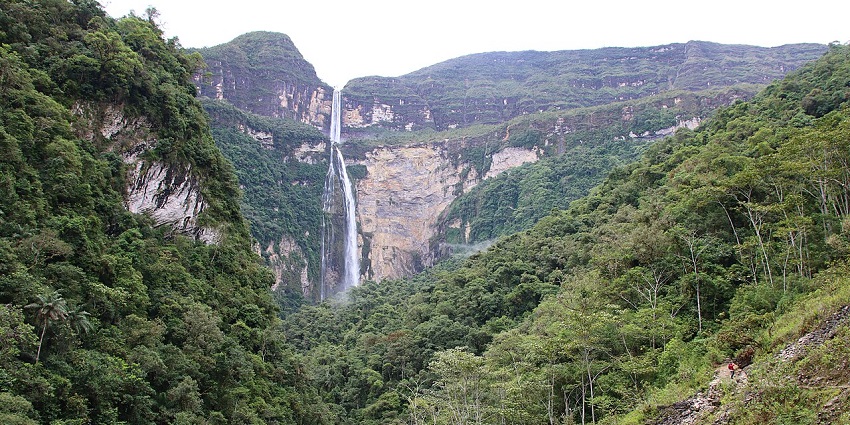
Photo: Draceane / Wikimedia Commons
Gocta Cataracts is among the highest waterfalls in the world. It divides into two large falls and is set in a dense cloud forest, creating an incredible mystical experience. The hike to Gocta is a big draw, traversing a verdant landscape filled with orchids. It can be spotted from the surrounding villages and has stunning views, especially in the rainy season. Gocta’s cultural significance also contributes to its mystique, with local legends describing a curse and a mermaid guarding buried treasure. A combination of natural beauty and folklore makes Gocta a must-see for adventurers and nature lovers alike.
Location: Cocachimba, Amazonas Region
Accessibility: 5.5 km hike from Cocachimba village
Best Time To Visit: March to June (wet season for fuller flow)
2. Yumbilla Falls
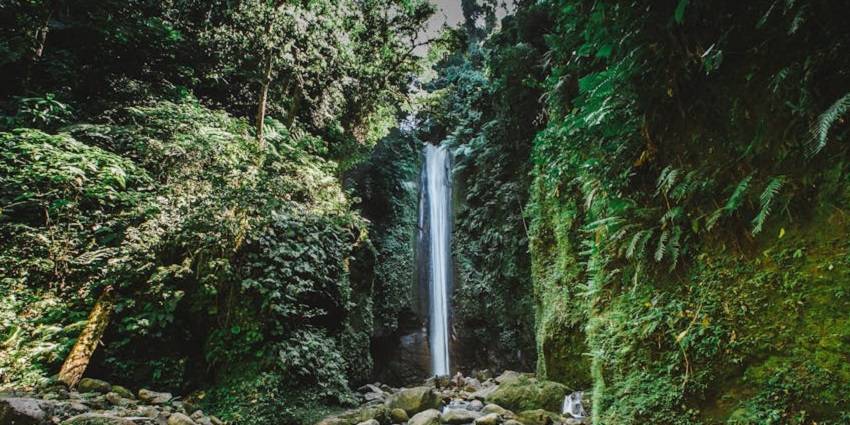
Photo: Denniz Futalan / Pexels
Yumbilla Falls is hidden deep within the cloud forests of the Amazon region and is one of the tallest in the world. It consists of four different drops running down a cliffside surrounded by lush vegetation. The waterfall is about a half-hour’s drive from the closest town of Cuispes. The trek to Yumbilla is moderate, with views of smaller waterfalls and limestone formations. The region is located within the Cordillera Oriental mountain range and harbours abundant biodiversity. Yumbilla tends to be neglected and is less visited than Gocta, allowing it to remain pristine and quiet.
Location: Near Cuispes, Amazonas Region
Accessibility: 6 km hike from Cuispes
Best Time To Visit: May to June, October and November
3. Ahuashiyacu Waterfall
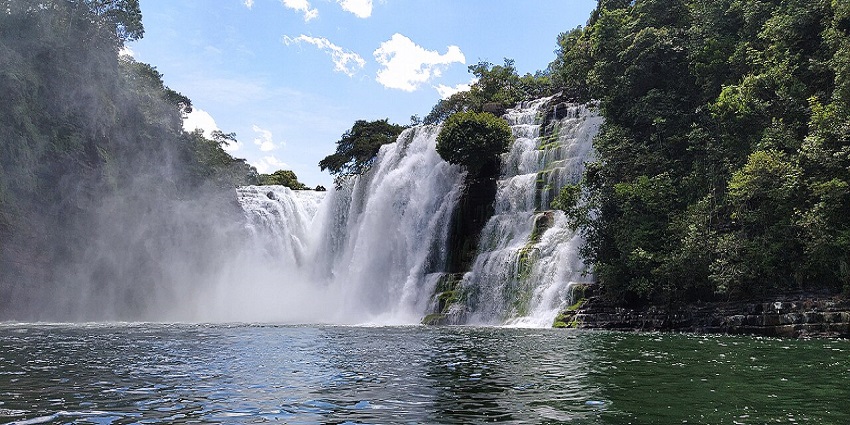
Photo: Javierhurtadovaca / Wikimedia Commons
The Ahuhashiyacu Waterfall is among the most popular waterfalls in Peru. The name translates to “singing water” in Quechua. The waterfall cascades down to a pool of crystal-clear water framed by tropical rainforest. Ahuashiyacu is easily accessible, provided by a short trail and wooden walkways, making it suitable for families and light travellers. The area is known for its butterflies, hummingbirds, and colourful flora. It’s often included in day tours from Tarapoto and has facilities like restrooms and viewpoints. The waterfall’s accessibility, natural beauty and surrounding jungle ambience have endeared it to visitors to the Amazonian highlands.
Location: Near Tarapoto, San Martín Region
Best Time To Visit: May to November
4. Catarata La Chinata
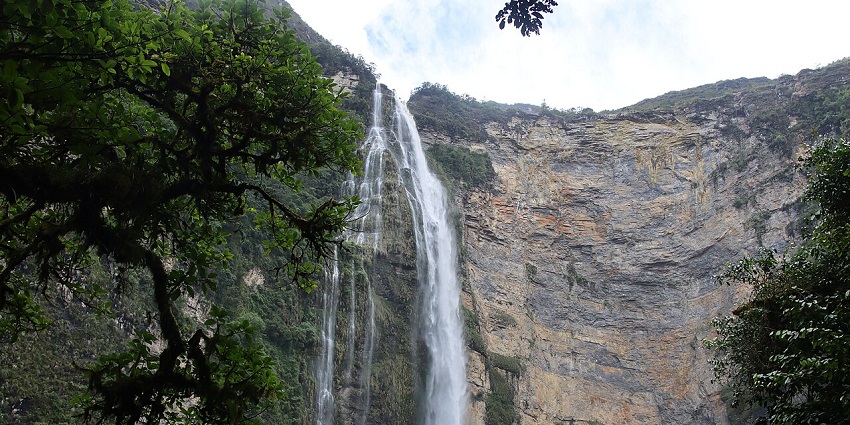
Photo: Draceane / Wikimedia Commons
Catarata La Chinata is a stunning waterfall in the Amazon region close to the town of San Carlos. It is a rocky precipice in a dense, cloud-veiled forest and is peaceful and remote. This waterfall forms several tiers and natural basins. Getting to Chinata requires a moderate hike along rural trails and rivers through untouched Andean scenery. Travellers also witness endemic species of plants, orchids and birds on the way. The falls are a great stop for adventurous trekkers and eco-tourists. The effects of Chinata are best in the rainy season, as the cliff surrounded by thick greenery and clouds.
Location: Near San Carlos, Bongará Province, Amazonas
Hike Duration: 2 to 3 hours from San Carlos
Best Time To Visit: May to November
5. Catarata del Tirol
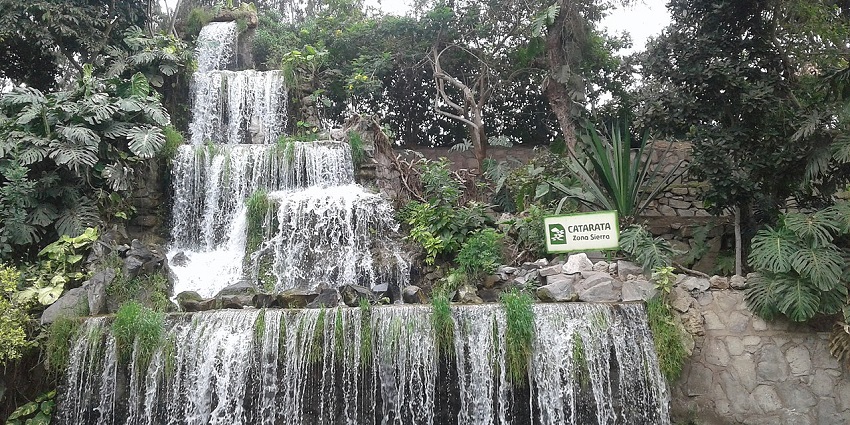
Photo: RockSkaPunkMetal / Wikimedia Commons / Image For Representation
Hidden away in the central Peruvian jungle, Catarata del Tirol is a beautiful waterfall near San Ramón in the Chanchamayo Province. This waterfall tumbles into a rocky pool, framed by lush foliage and is easily accessed via a scenic 30-minute hike. The trail runs along a placid river and offers views of butterflies, tropical foliage and native birds. Catarata del Tirol is a favourite hangout spot for locals and tourists, who flock to the cool waters for picnics. During the rainy season, the water flow increases. The waterfall’s proximity to large towns makes it ideal for day trips.
Location: Near San Ramón, Junín Region
Trail Length: 1.5 km from the main road
Best Time To Visit: May to December
6. Catarata de Pucayaquillo
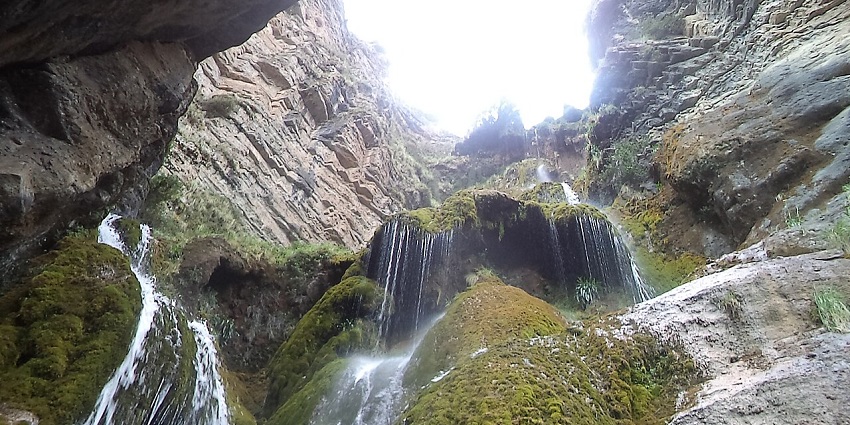
Photo: Yeny yanett / Wikimedia Commons
The Catarata de Pucayaquillo is a calm waterfall buried in the tropical woods of the San Martín region near the city of Tarapoto. Accessible by a brief guided hike through dense Amazonian jungle, the trail to the waterfall features interactions with exotic flora and fauna. It is surrounded by vines and mossy stones that make the setting wild and untamed. The region is part of a protected ecotourism zone focused on conservation and sustainable tourism practices. You can take the plunge into the natural pool.
Location: Near Tarapoto, San Martín Region
Best Time To Visit: May to October
7. Catarata Bayoz
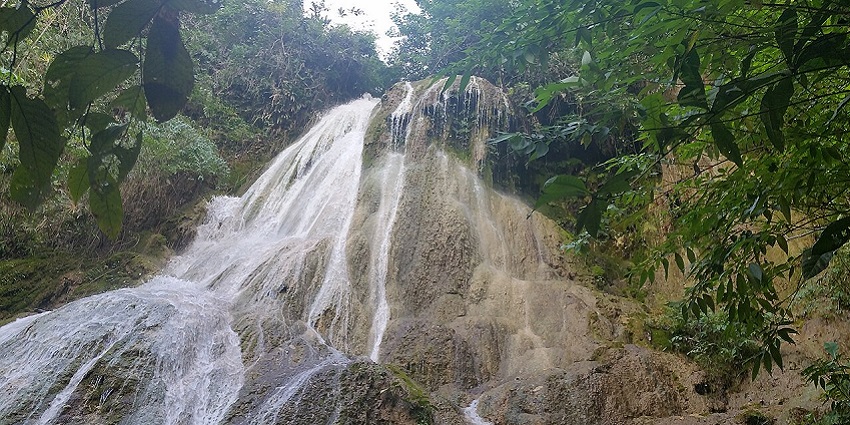
Photo: Heiner Amado Cadillo / Wikimedia Commons / Image For Representation
One of the most impressive waterfalls in the central Peruvian jungle is Catarata Bayoz in Chanchamayo Province. The cascade is tiered, plunging across the broad rock formations to produce a wide, apron-like cascade. The water flows across its wide, layered face is visually appealing. A mile from the main road, a short hike takes visitors to the base of the falls, where you can swim in the crisp, natural pools or rest on the boulders nearby. It is surrounded by tropical forest and is regularly bundled into adventure circuits alongside local waterfalls and river rafting adventures.
Location: Near Perené, Junín Region
Best Time To Visit: April to December
8. Velo de Novia Waterfall (Bride’s Veil)
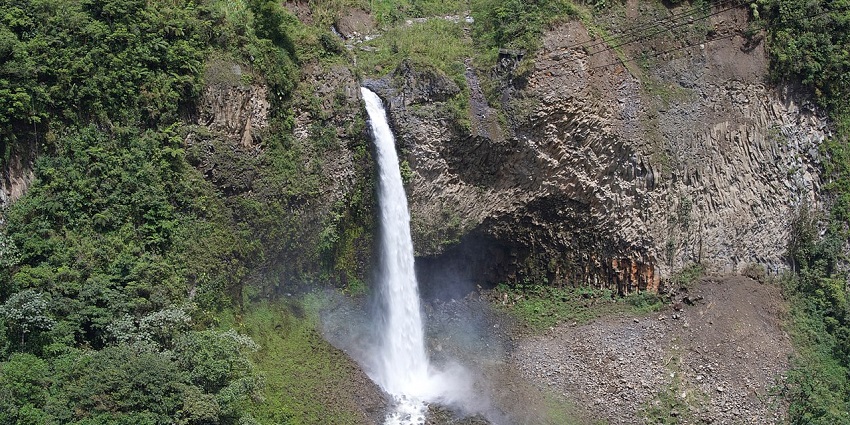
Photo: Josuadaniel / Wikimedia Commons
Velo de Novia is a beautiful waterfall whose delicate flowing shape resembles a bride’s veil flowing down a cliff. This waterfall is located near the Oxapampa Province. It is surrounded by dense cloud forest and lush landscapes. The path to the falls passes by birds, orchids and coffee farms. Velo de Novia is part of a wider ecotourism circuit, combined with nearby natural attractions. The waterfall’s misty spray offers a peaceful atmosphere. The waterfall is the favourite tranquil site. It is an ideal place to commune with the lush nature of the central passes of the Peruvian highlands.
Location: Near Villa Rica, Pasco Region
Best Time To Visit: April to September
9. Tres Hermanas Falls
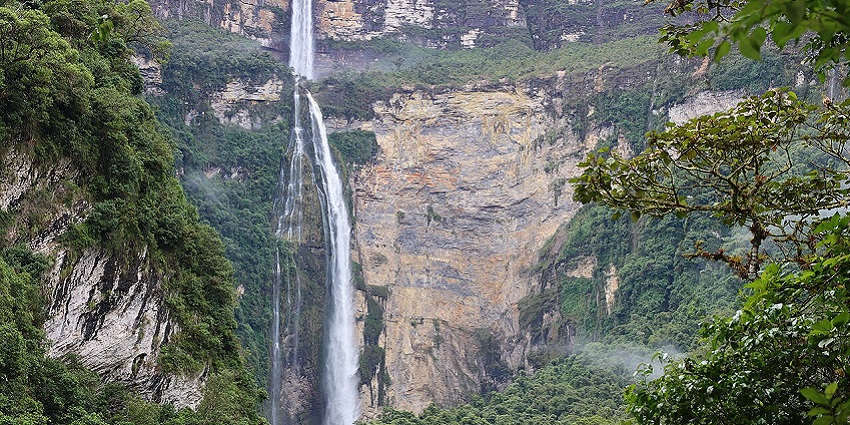
Photo: Draceane / Wikimedia Commons
Tres Hermanas Falls (“Three Sisters”) is one of the tallest waterfalls in Peru. The falls are surrounded by dense, remote cloud forest and are hard to reach, which adds to their pristine and majestic aura. The fall sits within a protected and sparsely populated region of Yellowstone. Tres Hermanas is an emblem of Peru’s secret natural riches, thriving in perfect balance with the park’s dense biodiversity. It is a dream destination for explorers and researchers focused on pristine ecosystems and high-altitude Andean wilderness.
Location: Otishi National Park, Junín Region
Best Time To Visit: April to September
10. Catarata de Parijaro
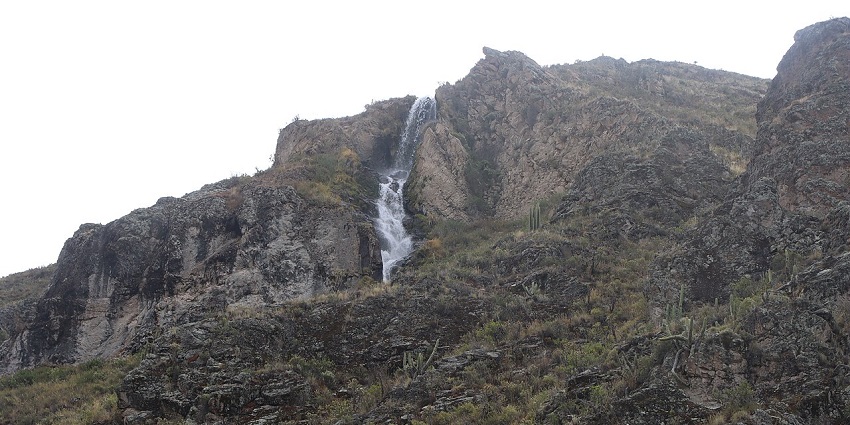
Photo: Draceane / Wikimedia Commons
Catarata de Parijaro is a remote, breathtaking waterfall deep in the rainforest of Otishi National Park in the Junín region. It is significant both culturally and ecologically. Protected by dense forest and the state of surrounding state park. Parijaro is only accessible by aerial expedition or specialised, eco-centric tours. The surrounding landscape is occupied by an undeveloped ecosystem filled with endemic wildlife and monitor species. Its majestic inaccessibility makes it a must-visit destination hidden in Peru’s tropical heart.
Location: Otishi National Park, Junín Region
Best Time To Visit: January to April
The waterfalls in Peru are not simply natural attractions but are portals to the country’s ecological wealth, cultural legacy and adventurous spirit. Each waterfall, whether tucked far into remote national parks or rushing past used jungle trails, is a geological wonder and an environmental variety. Book your trip with TripXL, plan your visit to the hidden gems of Peru, and explore its natural heritage and sustainable lifestyles.
Cover Photo: USAID Digital Development / Wikimedia Commons


 WhatsApp
WhatsApp
 Twitter
Twitter









